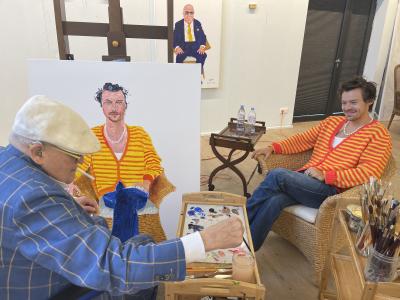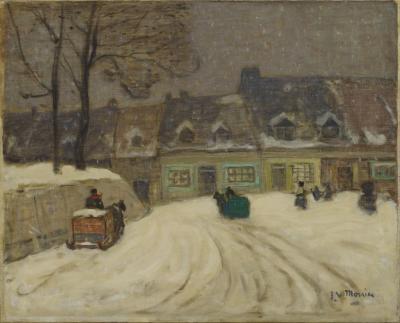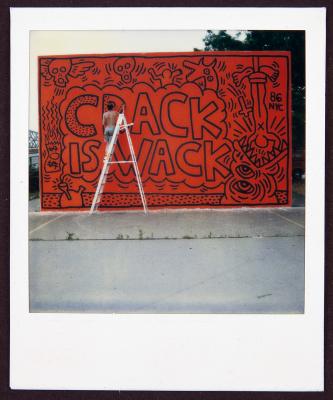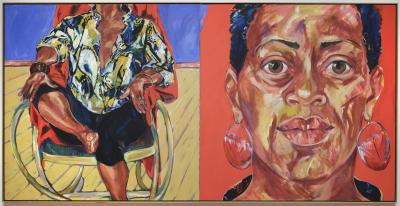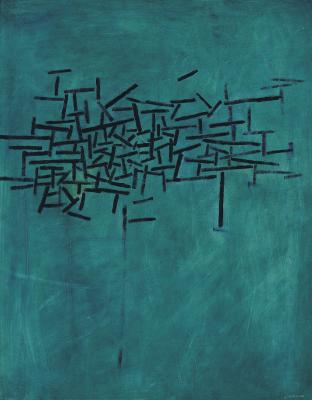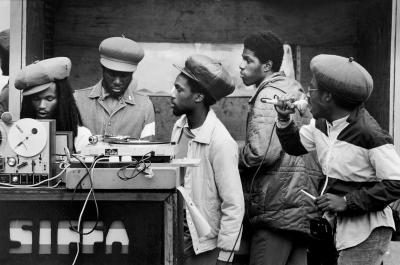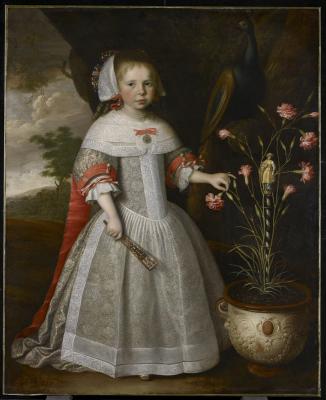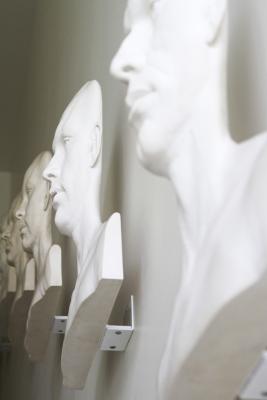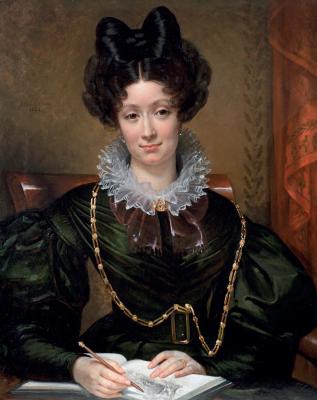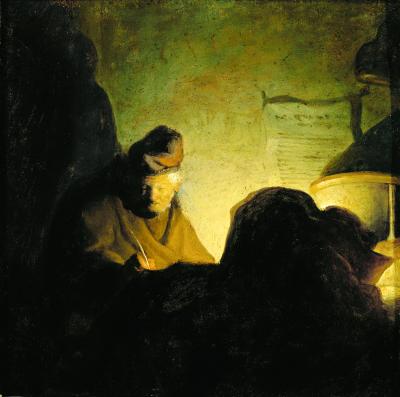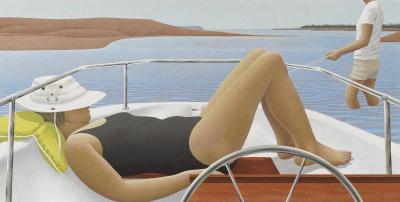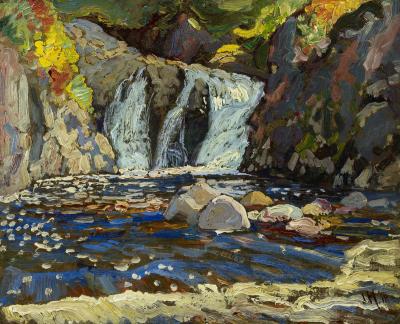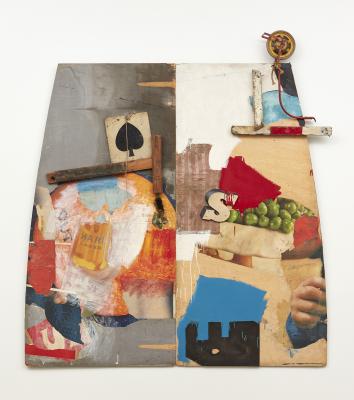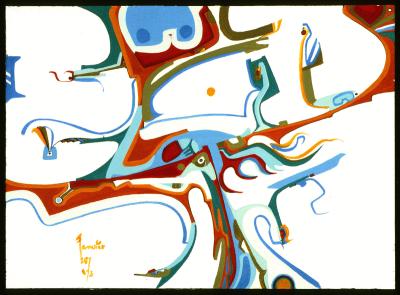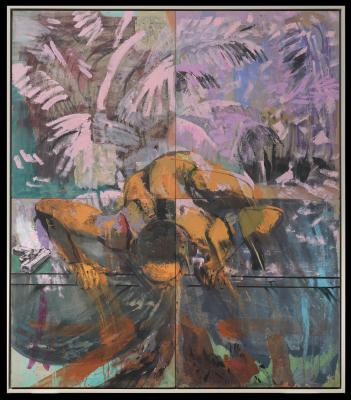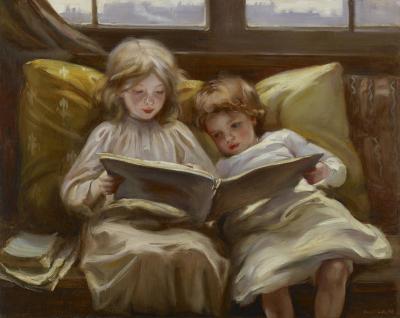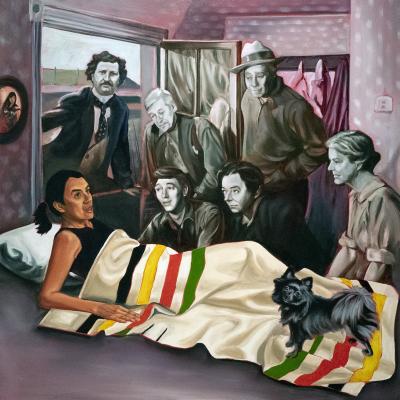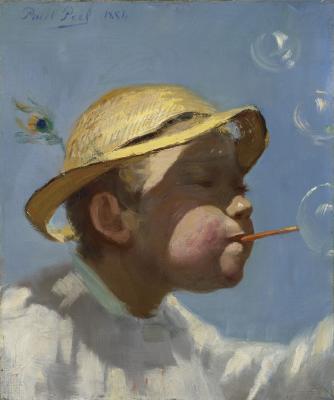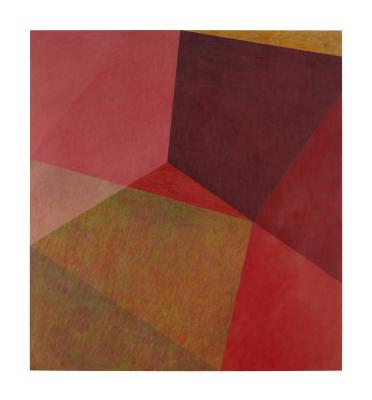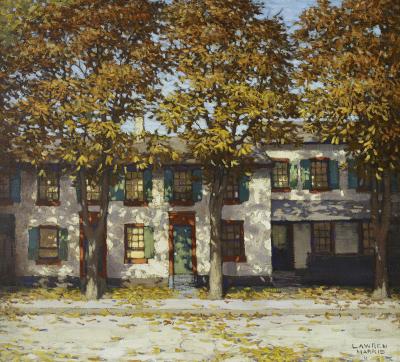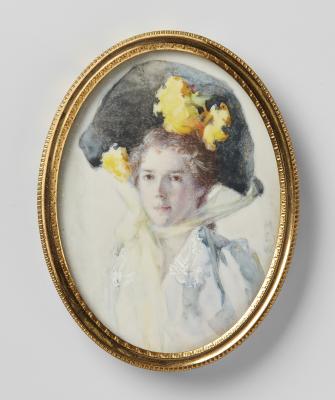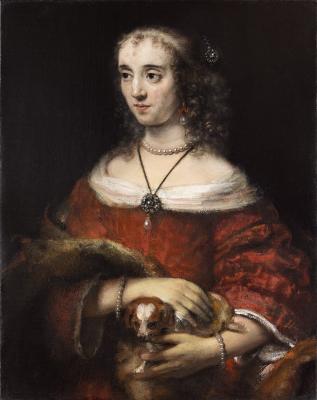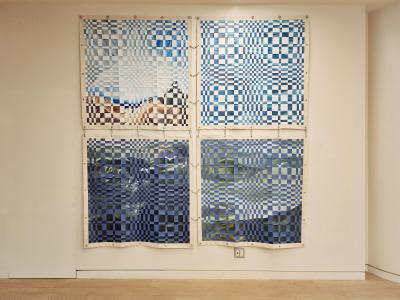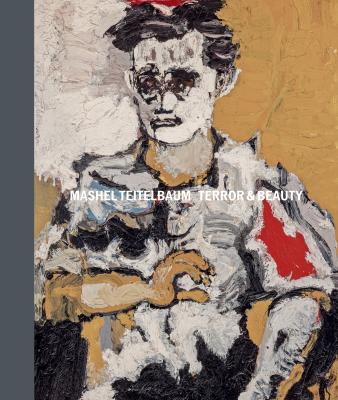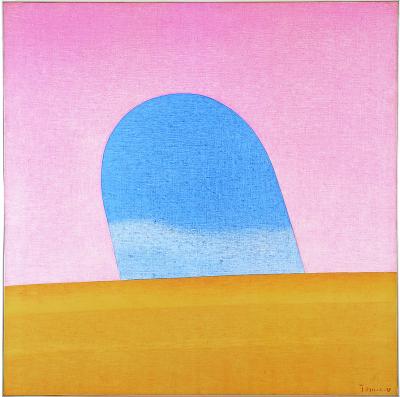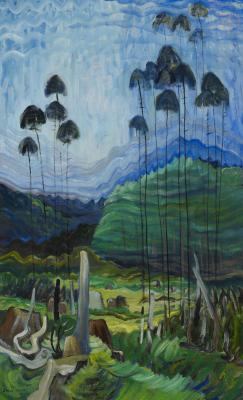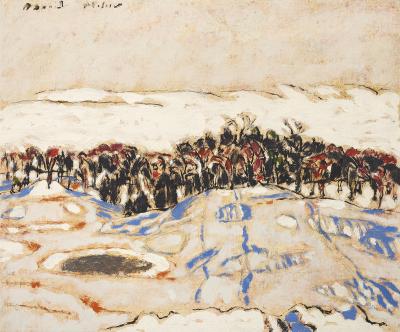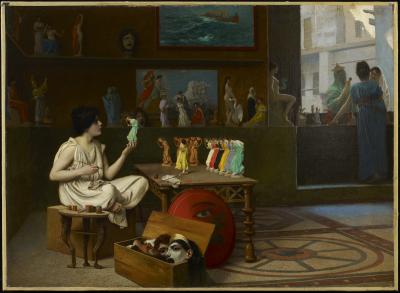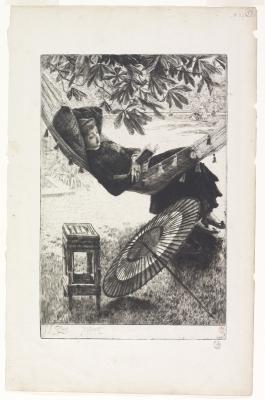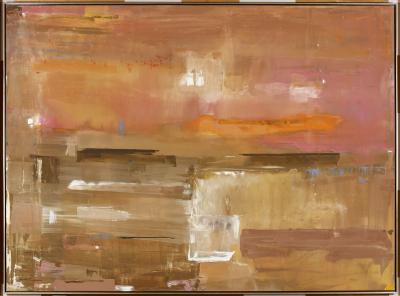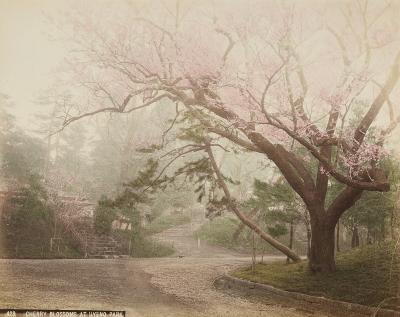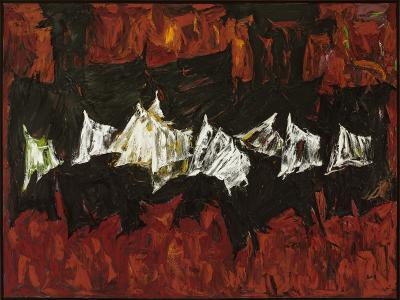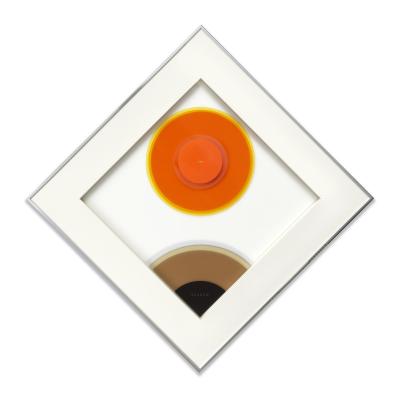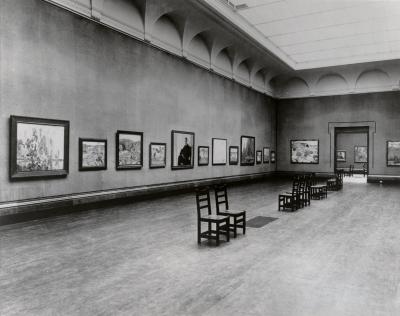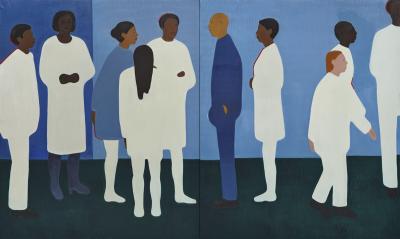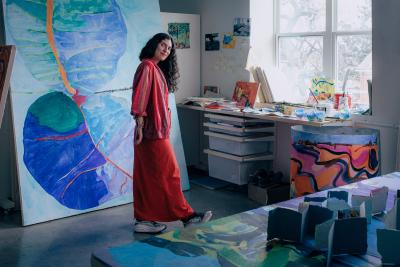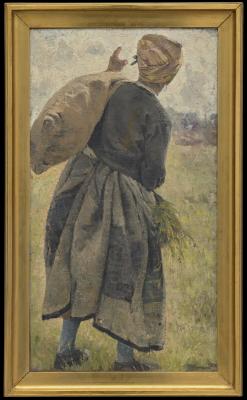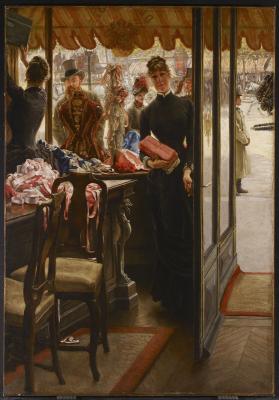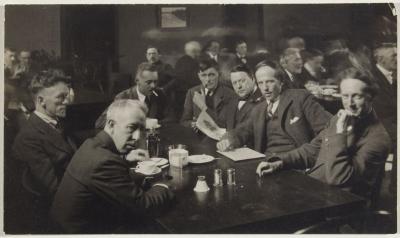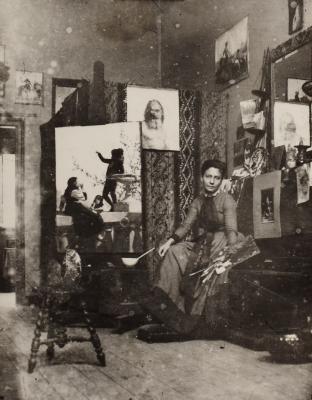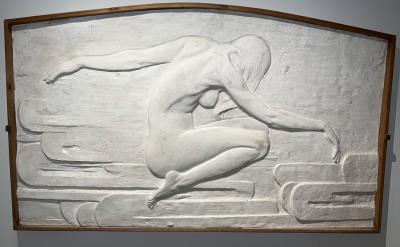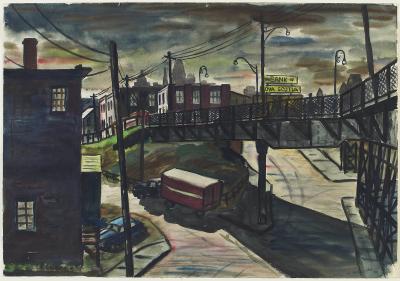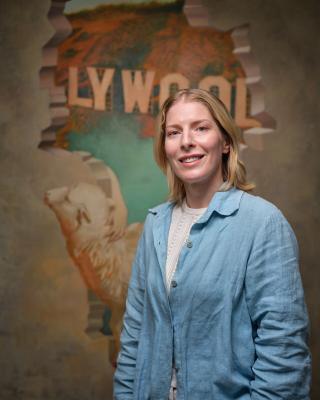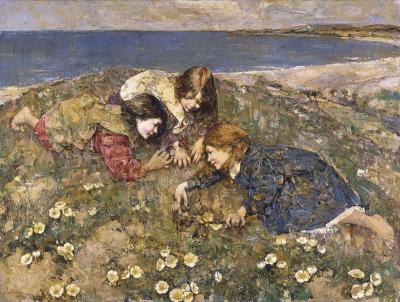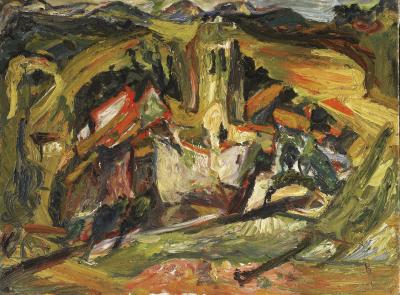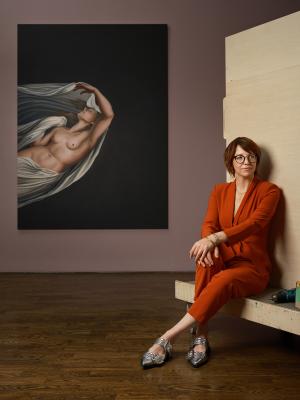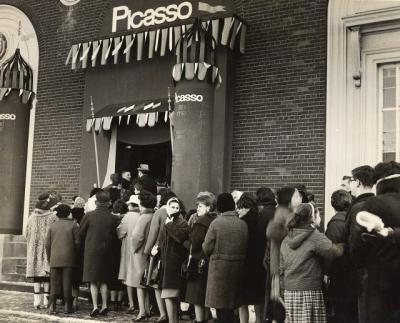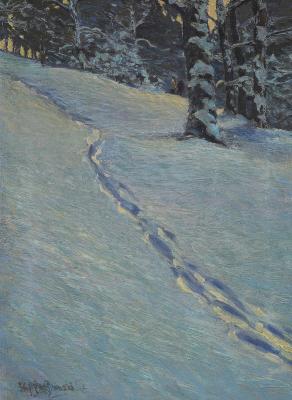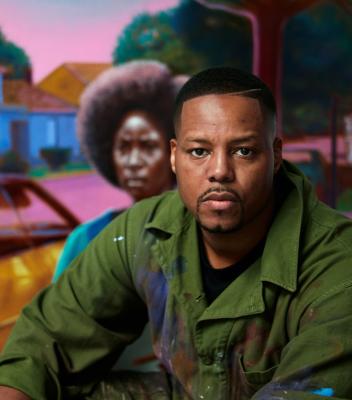Kehinde Wiley’s fallen figure
Wiley examines systemic violence against Black people at the de Young Museum of San Francisco
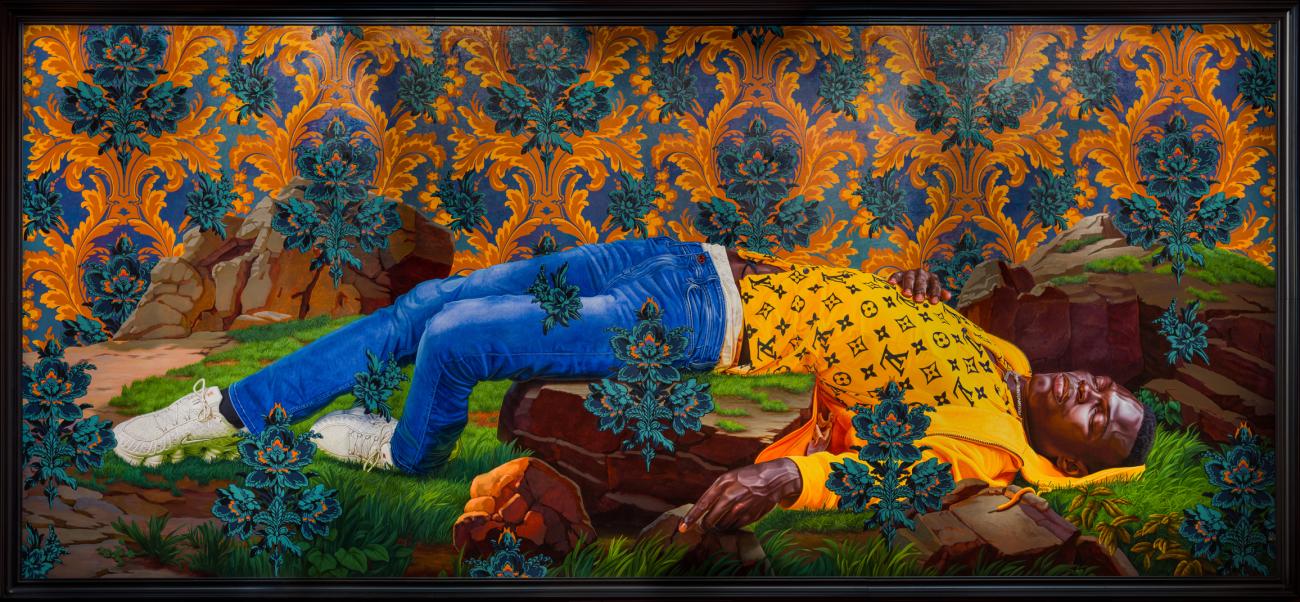
Kehinde Wiley, "Femme piquée par un serpent (Mamadou Gueye)", 2022 Oil on canvas 131 7/8 x 300 in. (335 x 762 cm) Framed: 143 5/16 x 311 x 3 15/16 in. (364 x 790 x 10 cm) ©️ 2022 Kehinde Wiley Courtesy of the artist and Templon, Paris – Brussels – New York. Photo: Ugo Carmeni.
Death and sacrifice have been a longstanding focus in historical Western art, with the crucifixion of Jesus Christ a prime example. Depictions of fallen heroes, saints and martyrs have long been used to create adoration and devotion for the subjects of these paintings. A recently unveiled exhibition by Kehinde Wiley at the de Young Museum of San Francisco is placing young Black people into these same historical iconographies to confront how systemic violence against Black people continues to be heavily silenced in our modern-day.
Well-known for his graceful representations of Black men, Wiley painted former U.S. President Barack Obama’s presidential portrait for the Smithsonian National Portrait Gallery in 2018, becoming the first African-American painter to do a presidential portrait for the Smithsonian. Obama’s portrait was done in Wiley’s signature style, which features Black people surrounded by lush green vegetation and bathed in warm light. Wiley’s works also often depict Black people in positions normally reserved for white royalty and nobility, inspired by the paintings of Old Masters, a group of highly recognized European artists active during the Renaissance.
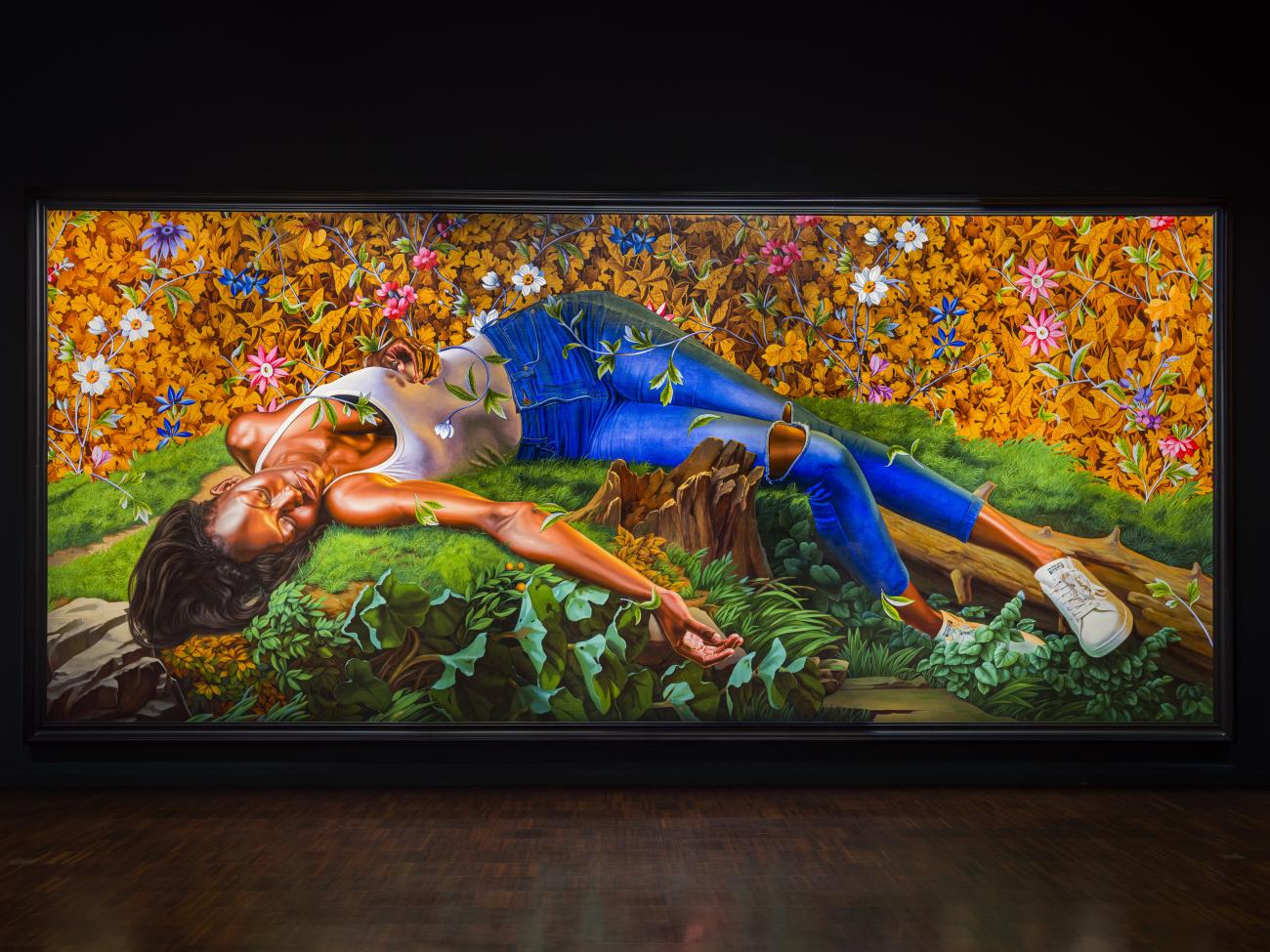
Kehinde Wiley, "Young Tarentine II (Ndeye Fatou Mbaye)", 2022 Oil on canvas 131 7/8 x 300 in. (335 x 762 cm) Framed: 143 5/16 x 311 x 3 15/16 in. (364 x 790 x 10 cm) ©️ 2022 Kehinde Wiley Courtesy of the artist and Templon, Paris – Brussels – New York. Photo: Ugo Carmeni.
Wiley’s latest exhibition, An Archaeology of Silence at the de Young Museum of San Francisco, places Black youth into the Western iconography of the fallen figure, bringing the longstanding history of violence against Black people into conversation with Western art’s spectacularized sacred to emphasize the silencing of Black people by dominant powers. An Archaeology of Silence presents 25 sculptures and paintings that serve as an elegy and monument to Black people killed around the world and the continued persistence of Black resistance to white supremacy. The exhibition was curated by Claudia Schmuckli, Curator in Charge of Contemporary Art and Programming at the Fine Arts Museums of San Francisco.

Kehinde Wiley, "The Dead Toreador (Sophie Ndiaye)", 2021 Bronze and wooden frame with gold letters 15 15/16 x 35 1/16 x 103 1/8 in., 533.51 lb. (40.5 x 89 x 262 cm, 242 kg) ©️ 2022 Kehinde Wiley Courtesy of the artist and Templon, Paris – Brussels – New York. Photo: Ugo Carmeni.
An Archaeology of Silence continues Wiley’s 2008 series of large-scale portraits of young Black men inspired by Hans Holbein’s The Body of the Dead Christ in the Tomb (1520-1522). This painting inspired Wiley’s ongoing exploration into the iconography of death, sacrifice and martyrism in Western art. Continuing this series against the backdrop of the COVID-19 pandemic, the murder of George Floyd, and the most recent set of Black Lives Matter protests, An Archaeology of Silence, confronts the legacy of colonialism, asking whose deaths and sacrifices are revered, and whose deaths and sacrifices are silent and ignored.
Wiley departs from his signature re-imaginings of Western portraiture to instead conceive European art’s eroticization of the fallen figure through his signature style. Rejecting verticality, the works in this exhibition feature Black subjects laid horizontally amongst nature and flowers, their state ultimately ambiguous to the viewer — either dead, sleeping, in pain or in grief. The paintings and sculptures on view continue to draw from Western and European iconography, each work inspired by historical paintings of heroes, martyrs and saints.
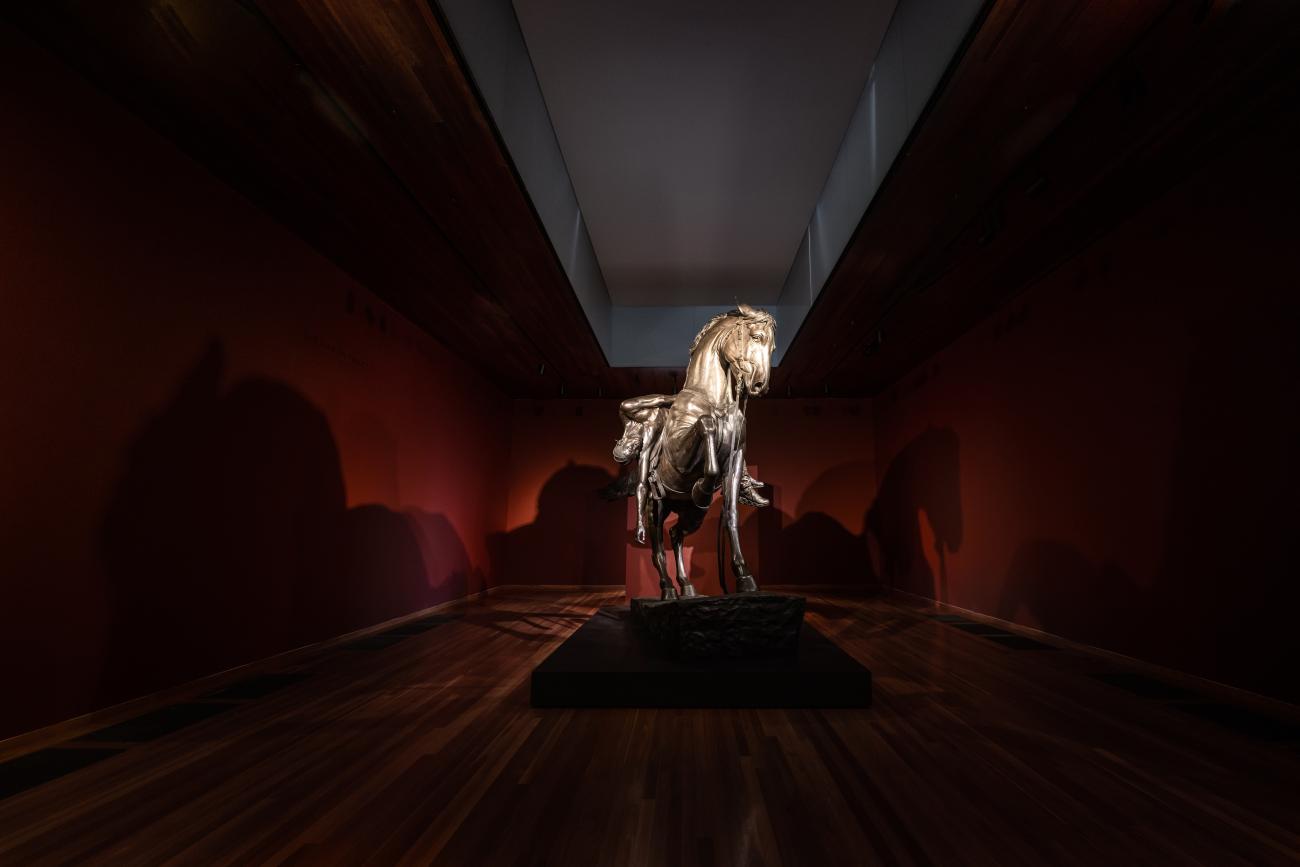
Kehinde Wiley (b. 1977) An Archeology of Silence, 2021 Bronze overall, approximate: 161 7/16 x 59 1/16 x 200 13/16 in., 2 Ton 1,363.79 lb. (410 x 150 x 510 cm, 2,433 kg) Footprint: 48 13/16 x 135 7/16 in. (124 x 344 cm) base: 11 13/16 x 88 3/16 x 174 13/16 in. (30 x 224 x 444 cm) Horse body: 1 Ton 339.08 lb. (1,061 kg) Horse legs: 1 Ton 120.83 lb. (962 kg) Figure: 903.89 lb. (410 kg) Courtesy of the Artist and Galerie Templon EX1137.24 de Young Museum, San Francisco, 2023. Photo by Gary Sexton. Courtesy of the Fine Arts Museums of San Francisco
The exhibition’s title-giving work is related to Wiley’s sculpture Rumours of War (2019), both sculptures based on a monument to Confederate Army General James Ewell Brown Stuart. While Rumours of War placed a young man upright on a horse, mimicking the original position of the Confederate General, An Archaeology of Silence (2021) lays the young Black man across the horse, rejecting the celebration of state power and turning attention to those oppressed by it.
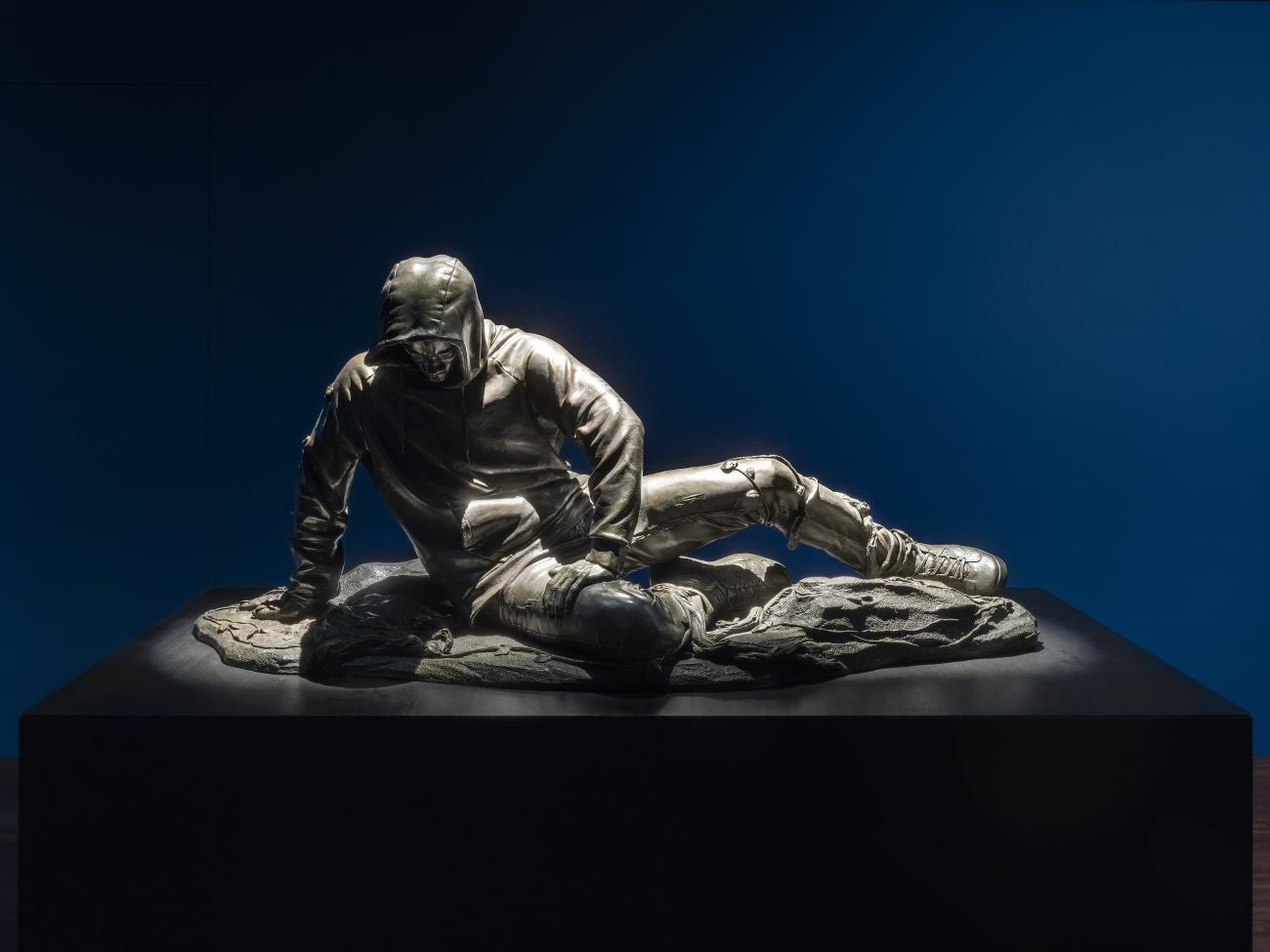
Kehinde Wiley, "Dying Gaul, after a Roman Sculpture of the 1st Century", 2021 Bronze 21 1/16 x 18 7/8 x 47 1/16 in., 156.53 lb. (53.5 x 48 x 119.5 cm, 71 kg) base: 35 7/16 x 27 9/16 x 55 1/8 in. (90 x 70 x 140 cm) ©️ 2022 Kehinde Wiley Courtesy of the artist and Templon, Paris – Brussels – New York. Photo: Ugo Carmeni.
This exhibition features some of Wiley’s largest and smallest works. His use of scale critiques capitalism’s exploitation of Black culture, paints his Black subjects in an epic sensibility not usually presented in Western depictions of the fallen figure, and creates a sense of intimacy and vulnerability.
Kehinde Wiley’s An Archaeology of Silence is on view until October 15, 2023, at the de Young Fine Art Museum of San Francisco, and will thereafter travel to audiences across the US on a tour to the Museum of Fine Arts, Houston; the Pérez Art Museum Miami; and the Minneapolis Institute of Art throughout 2023–2025.
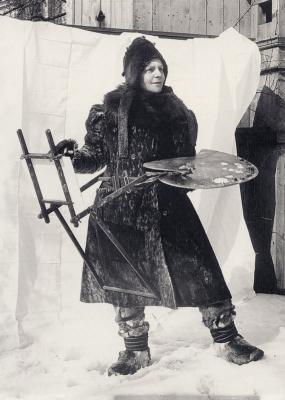
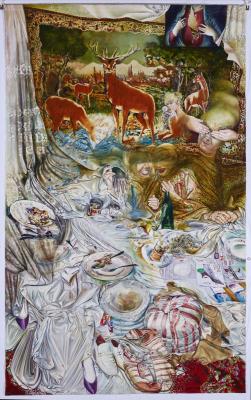
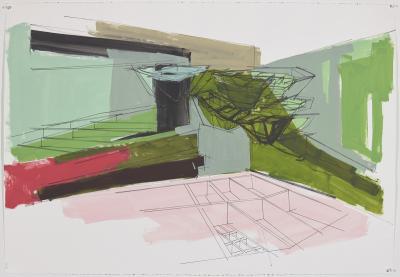

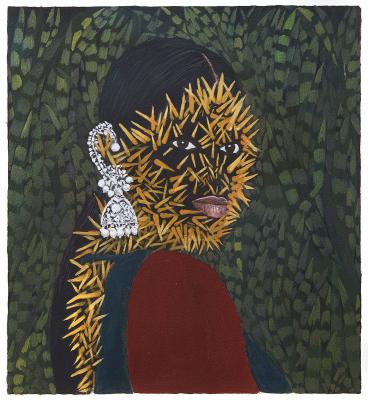

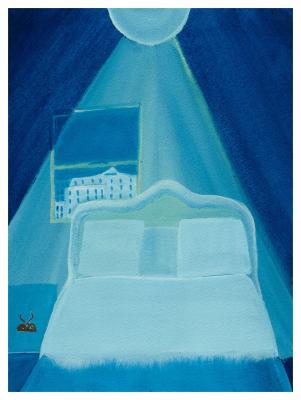
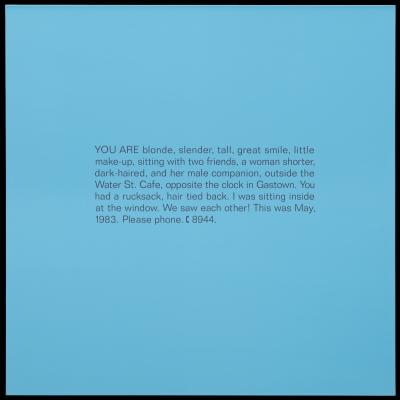
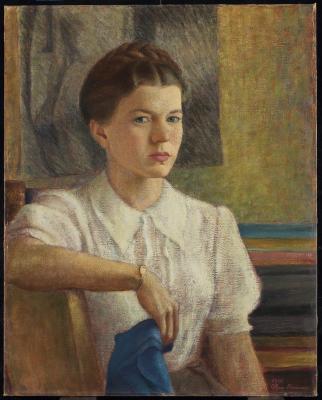
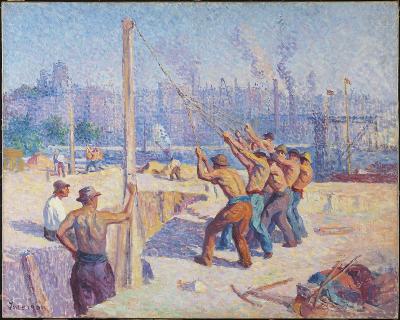
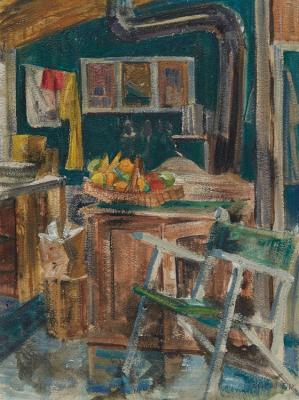
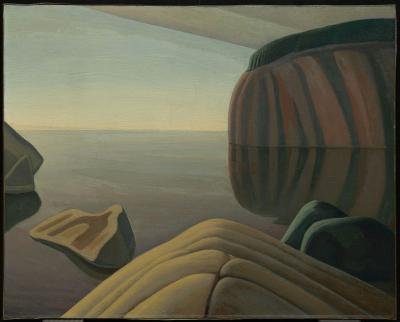
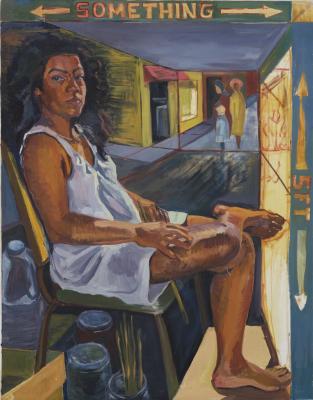
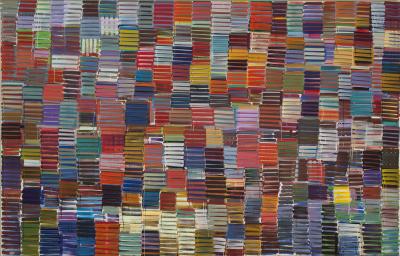

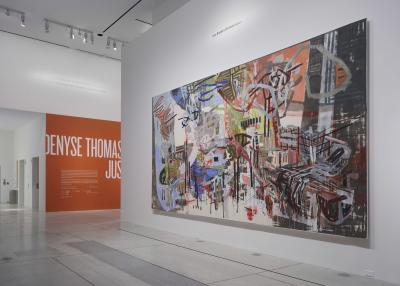
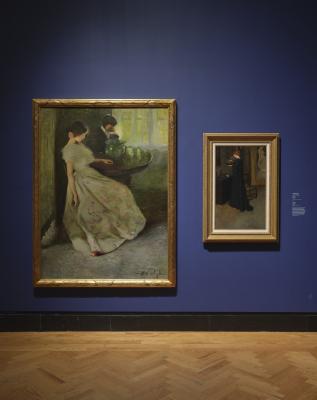
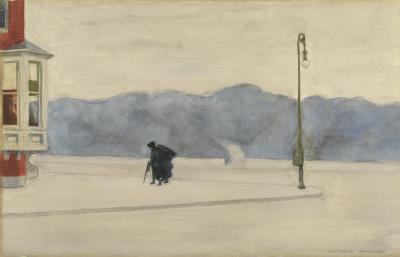
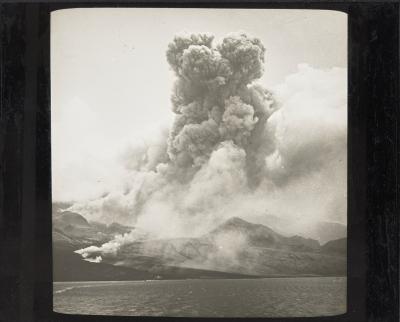
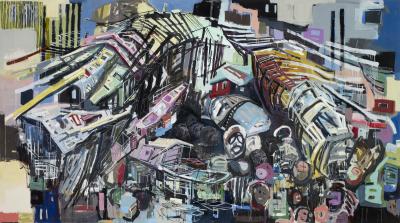
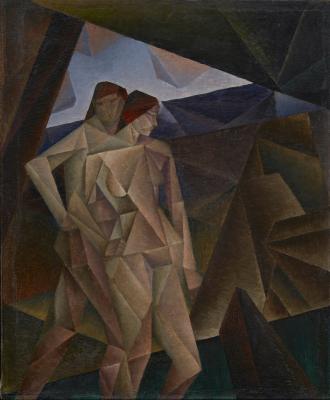
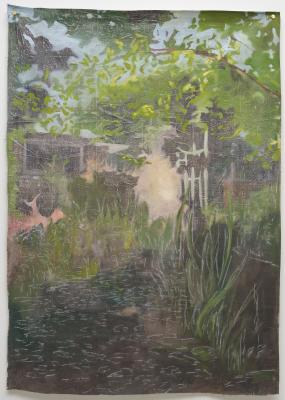
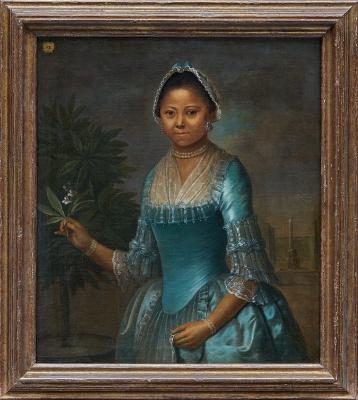

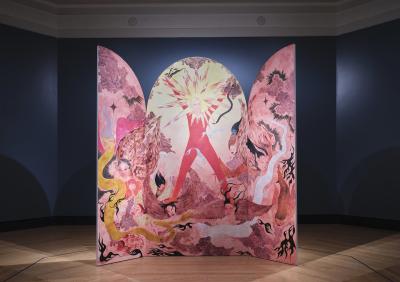
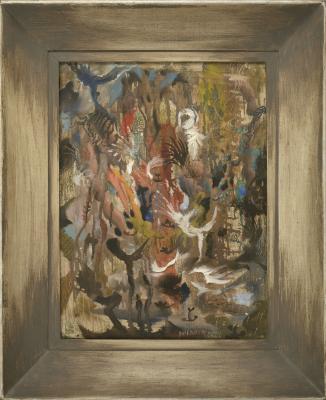
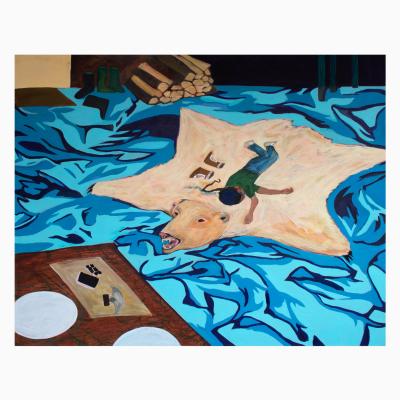
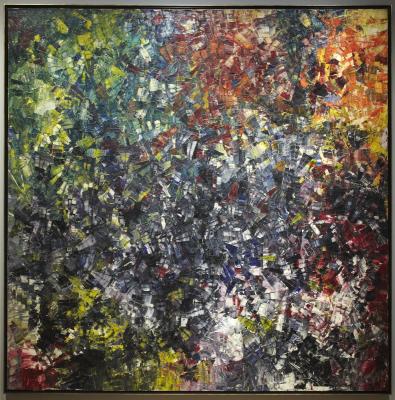
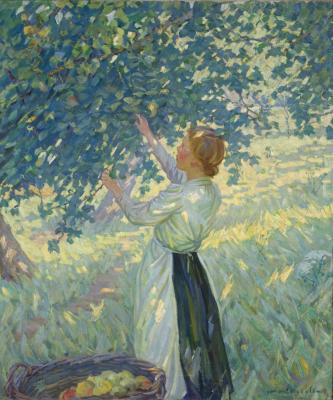
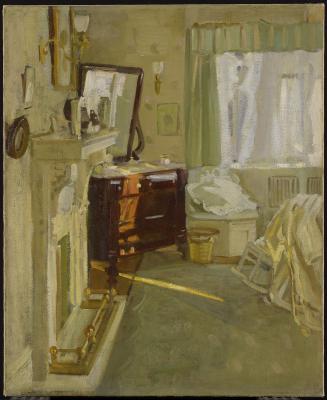
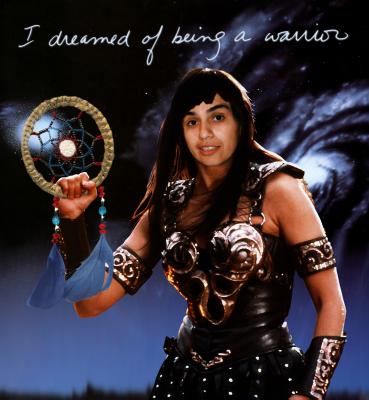
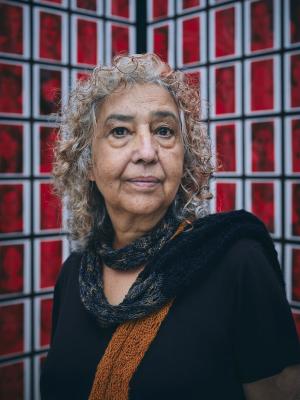
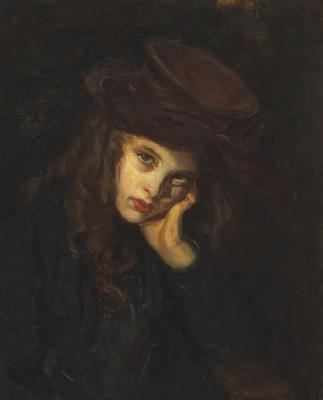
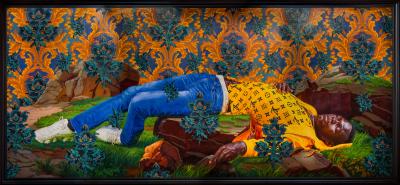

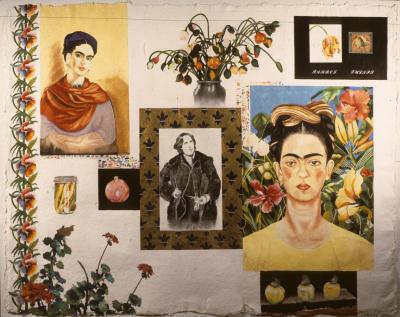
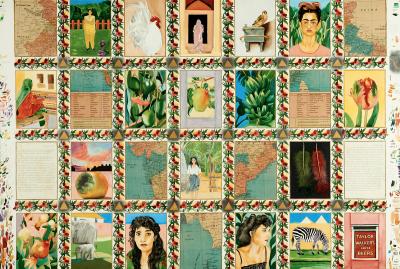
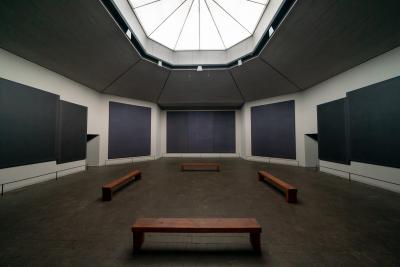
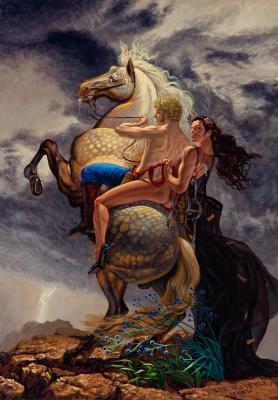
![Keith Haring in a Top Hat [Self-Portrait], (1989)](/sites/default/files/styles/image_small/public/2023-11/KHA-1626_representation_19435_original-Web%20and%20Standard%20PowerPoint.jpg?itok=MJgd2FZP)
